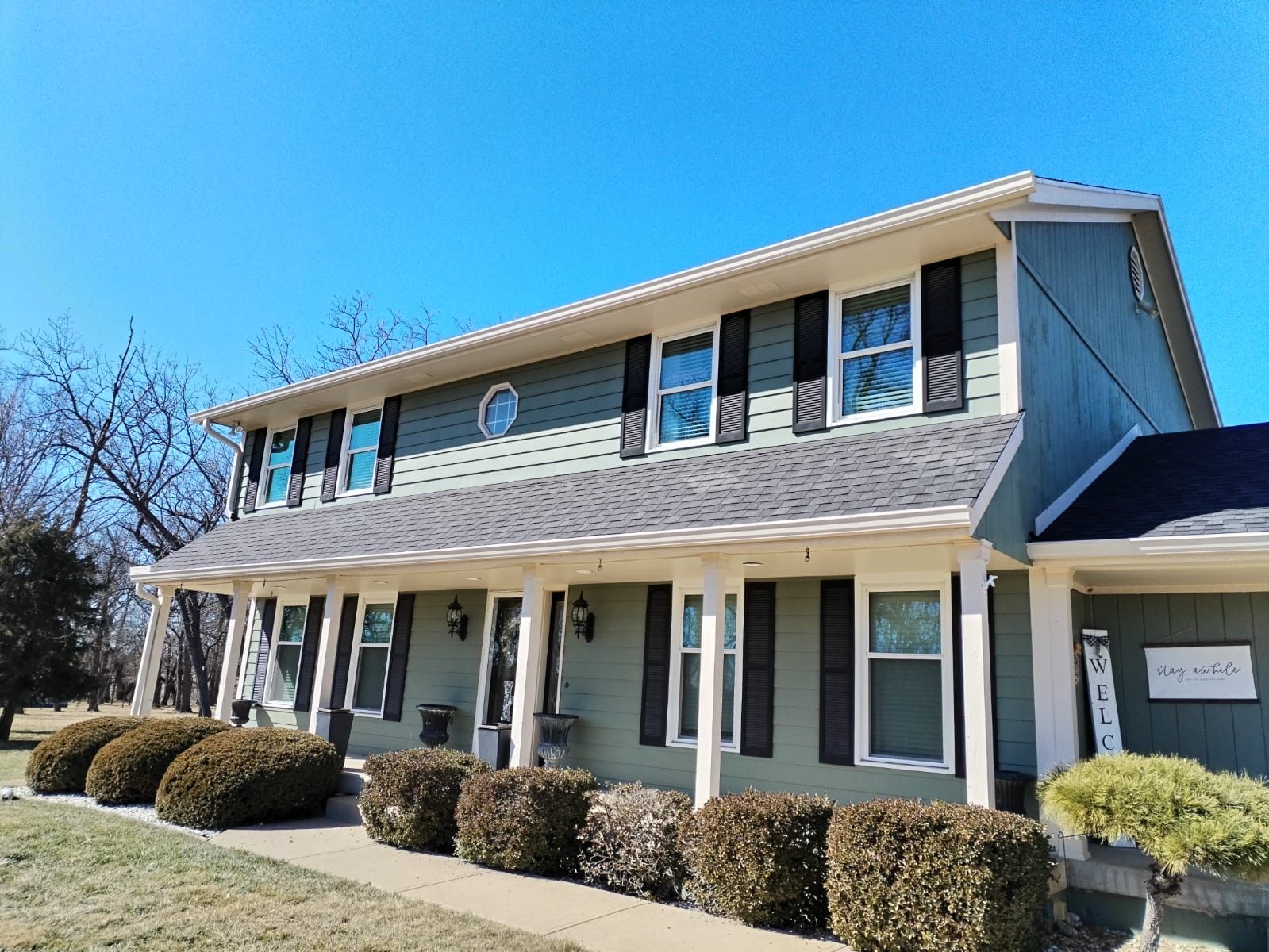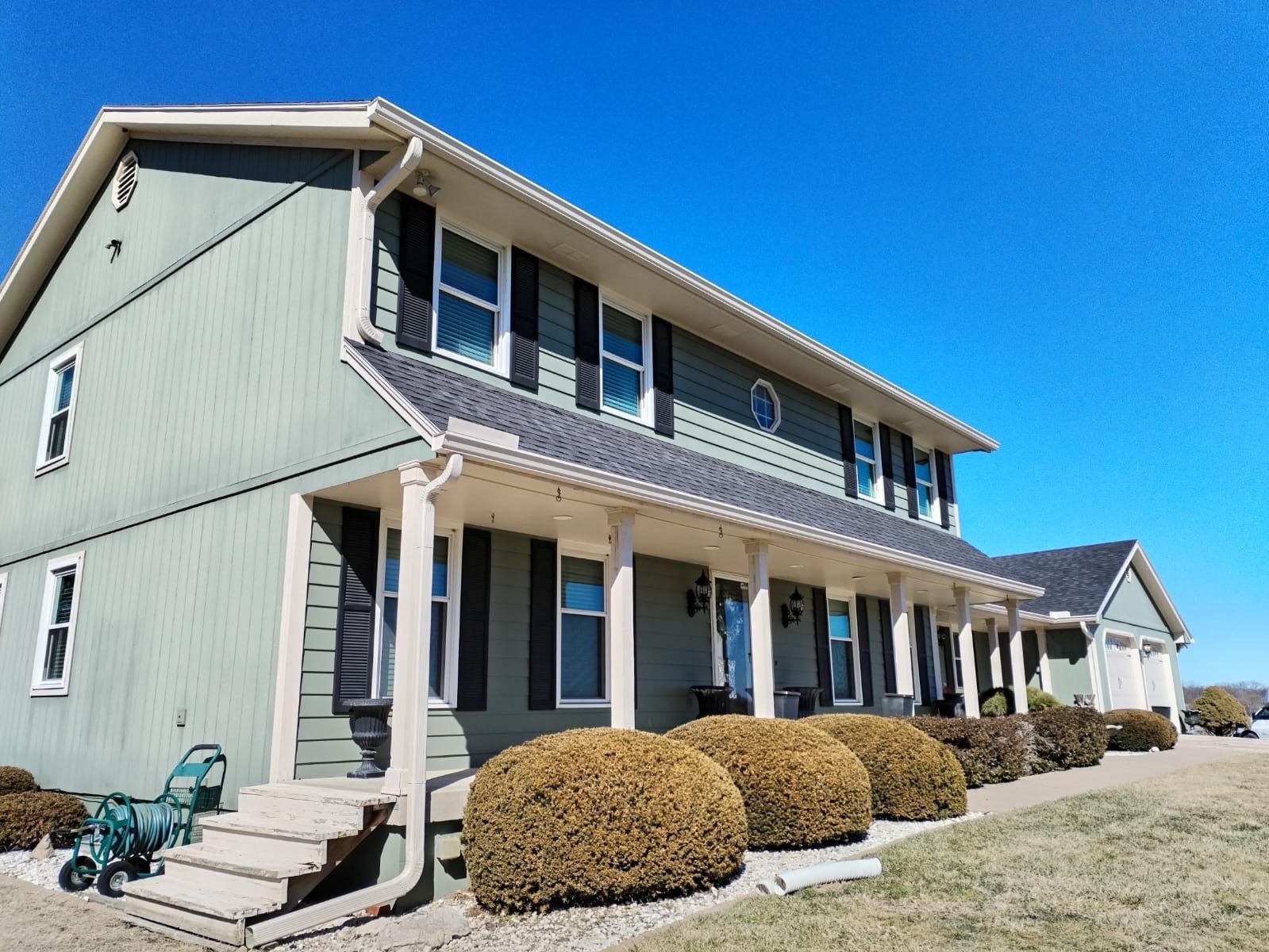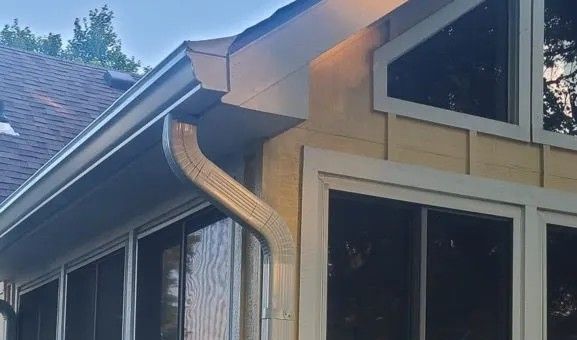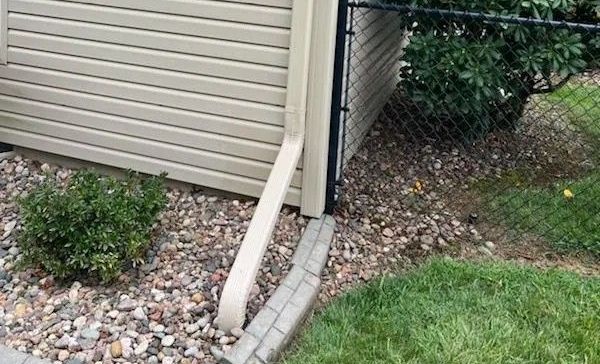Gutters Dripping at Joint: Quick Fixes to Prevent Water Damage and Extend Lifespan

Dripping gutter joints can lead to serious water damage, compromising your home's foundation and exterior walls. The most common causes of leaking gutter joints are loose connections, deteriorated sealant, or improper installation, which can usually be fixed with basic tools and materials from any hardware store.
Water damage from leaking gutter joints often starts small but can escalate into costly repairs if left unchecked. The telltale signs include water streaks on exterior walls, puddles near your foundation, or visible drips during rainfall. Catching these issues early can save thousands in potential repair costs.
When your gutters work properly, they protect your home by channeling rainwater away from vulnerable areas. Regular inspection and maintenance of gutter joints helps prevent water infiltration and extends the life of your gutter system.
Key Takeaways
- Leaking gutter joints typically result from loose connections or failed sealants that require prompt attention
- Regular inspection of gutter joints prevents costly water damage to your home's structure
- Simple DIY repairs with proper materials can effectively solve most gutter joint leaks
Why Gutters Drip at Joints: Main Causes
Gutter joints represent critical connection points in your home's drainage system where water frequently escapes due to specific structural and environmental factors. These connection points face unique stresses that can compromise their water-tight seal.
Aging and Wear of Gutter Joints
Natural settling of your home creates subtle movements that strain gutter joints over time. These tiny shifts gradually weaken the seals between gutter sections.
Temperature fluctuations cause expansion and contraction of gutter materials, which puts additional stress on joint connections. This repeated movement loosens fasteners and breaks down sealants.
Joint deterioration often starts small but progresses rapidly without intervention. A tiny gap can expand into a significant leak within just one or two seasons.
Improper Installation and Poor Sealing
Common Installation Issues:
- Incorrect spacing between sections
- Misaligned joints
- Wrong type of sealant used
- Insufficient fasteners
Poor initial sealing leads to immediate or near-term leaks at joints. The wrong sealant choice can fail prematurely, especially in harsh weather conditions.
Professional installation requires precise measurements and proper overlap at each joint. Even a small misalignment of 1/4 inch can create a path for water to escape.
Debris and Clogged Gutters
Leaves, twigs, and other debris collect around joints, trapping moisture against seals. This trapped moisture accelerates seal deterioration.
Standing water from clogs puts extra weight on joints, causing them to sag and separate. The added pressure can break down even properly installed connections.
Regular cleaning prevents debris accumulation at joints. Quarterly maintenance helps identify potential joint issues before they become serious leaks.
Impact of Gutter Materials and Corrosion
Material Vulnerabilities:
- Aluminum: Susceptible to galvanic corrosion
- Steel: Rust formation at joints
- Vinyl: UV damage to seals
- Copper: Green patina development
Metal gutters face unique challenges from corrosion at joints. Salt air in coastal areas speeds up this corrosion process significantly.
Different metals meeting at joints can create galvanic reactions. This chemical process weakens joint connections and creates pinhole leaks.
Quality gutter materials with compatible components resist joint failures longer. Seamless gutter systems eliminate many joint-related issues entirely.
How to Detect and Assess Leaking Gutter Joints
Identifying gutter joint leaks requires methodical inspection and testing to pinpoint exact problem areas. Early detection helps prevent extensive water damage and costly repairs to your home's structure.
Visual Signs of Leaking Gutter Joint
Look for water stains or discoloration along the gutter seams during dry weather. These marks often appear as dark streaks or rust spots near the joints.
Check for gaps, separations, or visible cracks where gutter sections meet. Even small openings can lead to significant leaks over time.
Key indicators of joint problems:
- Rust or corrosion around metal fasteners
- Loose or missing screws at connection points
- Visible separation between gutter sections
- Peeling paint or oxidation near joints
Water Testing Techniques
Run water through your gutters with a garden hose on a dry day. Start at the highest point and observe water flow through each joint.
Mark leak locations with chalk or tape for later repair. Pay special attention to corner joints (miters) where two sections meet at angles.
Testing steps:
- Fill gutters slowly with water
- Watch for drips or streams at joints
- Check both inside and outside the gutter
- Test during daylight for better visibility
Recognizing Related Water Damage
Examine your home's exterior walls for water stains extending downward from gutter joints. These stains indicate ongoing leakage problems.
Inspect the ground below suspect joints for erosion or water pooling. Saturated soil and damaged landscaping often reveal hidden leaks.
Look for mold growth or rotting wood near gutter joints. These signs suggest long-term moisture exposure requiring immediate attention.
Issues With Fascia Board and Downspouts
Check fascia boards near gutter joints for soft spots, warping, or decay. Water penetration through failed joints often damages these supporting structures first.
Examine downspout connections for proper alignment and secure attachment. Loose or misaligned downspouts put extra stress on nearby joints.
Warning signs:
- Sagging gutters near joint areas
- Separated downspout connections
- Wet or discolored fascia boards
- Loose gutter hangers near joints
Effective Repair and Prevention Strategies
Fixing dripping gutter joints requires a systematic approach using the right materials and techniques. Professional-grade sealants, proper cleaning methods, and precise alignment work together to create lasting repairs.
Cleaning and Preparing the Gutter Joint
Remove all debris from the gutter using a plastic scoop or gloved hands. Pay special attention to the area around the leaking joint.
Use a wire brush to thoroughly clean both sides of the joint, removing old sealant and any corrosion. A clean surface ensures better adhesion of new sealant.
Dry the area completely with a clean cloth. Even small amounts of moisture can prevent proper bonding of repair materials.
Test the joint alignment by running water through the gutter. Mark any spots where water pools or doesn't flow properly.
Applying Gutter Sealant and Caulk
Choose a waterproof gutter sealant rated for exterior use. Silicone-based products offer superior durability and flexibility.
Apply a thick bead of sealant along the inside of the joint. Press firmly to work the material into any gaps or seams.
For metal gutters, roofing cement provides an extra layer of protection when applied over the initial sealant layer.
Let the sealant cure for 24 hours before testing. Avoid applying sealant if rain is forecast within the next day.
Replacing Brackets and Re-Aligning Joints
Check bracket spacing - they should be placed every 2 feet along the gutter length. Replace any loose or damaged brackets immediately.
Adjust bracket heights to ensure proper slope. Gutters should drop 1/4 inch for every 10 feet toward the downspout.
Use a level to verify alignment when installing new brackets. Misaligned supports can create pressure points that cause leaks.
Tighten all fasteners securing the gutter to the fascia board. Loose connections contribute to joint separation.
When Gutter Replacement Is Necessary
Signs that indicate replacement need:
- Multiple failing joints
- Severe rust or corrosion
- Recurring leaks despite repairs
- Separated seams that won't stay sealed
Professional gutter replacement services become cost-effective when repairs require more than 3-4 joint fixes.
Consider seamless gutters for new installations. They eliminate most joint-related issues and typically last 20+ years.
Upgrading to larger 6-inch gutters may solve persistent overflow problems that stress joints and connections.
Long-Term Protection and Maintenance Tips
Protecting your gutters from future drips and leaks requires a systematic approach focused on prevention and regular upkeep. Strategic maintenance combined with quality materials and proper installation techniques will maximize the lifespan of your gutter system.
Gutter Guards and Preventing Clogs
Types of Gutter Guards:
- Mesh screens
- Foam inserts
- Perforated metal covers
- Brush-style guards
Gutter guards act as your first line of defense against debris accumulation. They block leaves, twigs, and other materials while allowing water to flow freely through the system.
Select guards that match your local environment. Homes near pine trees need finer mesh compared to those dealing mainly with larger leaves.
Professional installation ensures proper fit and prevents guard separation that could lead to water overflow. Check guards quarterly for damage or sagging.
Maintaining Proper Gutter Slope
The ideal gutter slope is 1/4 inch drop per 10 feet of gutter length toward the downspout. An incorrect slope causes water pooling and joint stress.
Signs of Poor Slope:
- Standing water after rain
- Overflow during light rainfall
- Water marks under gutters
- Sagging sections
Use a level to check slope annually. Mark problem areas for adjustment.
Professional realignment may be needed if multiple sections show improper pitch. Small adjustments can often be made by repositioning hangers.
Inspecting and Securing Gutter Hangers
Check gutter hangers every spring and fall. Replace any that show rust, bending, or pulling away from the fascia board.
Optimal Hanger Spacing:
- Every 2 feet in snowy regions
- Every 3 feet in moderate climates
- Additional support near downspouts
Loose hangers create low spots where water collects. Tighten all fasteners during inspection.
Use corrosion-resistant hangers rated for your gutter size and local weather conditions. Add supplemental supports in areas that regularly collect ice or heavy debris.
Material Selection and Professional Maintenance
Choose materials based on your climate and budget. Seamless aluminum offers excellent durability for most homes. Copper and steel provide enhanced strength for severe weather zones.
Schedule professional inspections every 2 years. Experts can spot early signs of joint separation and perform specialized repairs.
Key Maintenance Tasks:
- Seal joints with gutter-specific caulk
- Replace worn fasteners
- Repair small holes promptly
- Clean gutters thoroughly twice yearly
Apply protective coatings to extend material life. Anti-corrosion treatments help prevent rust in metal systems.



